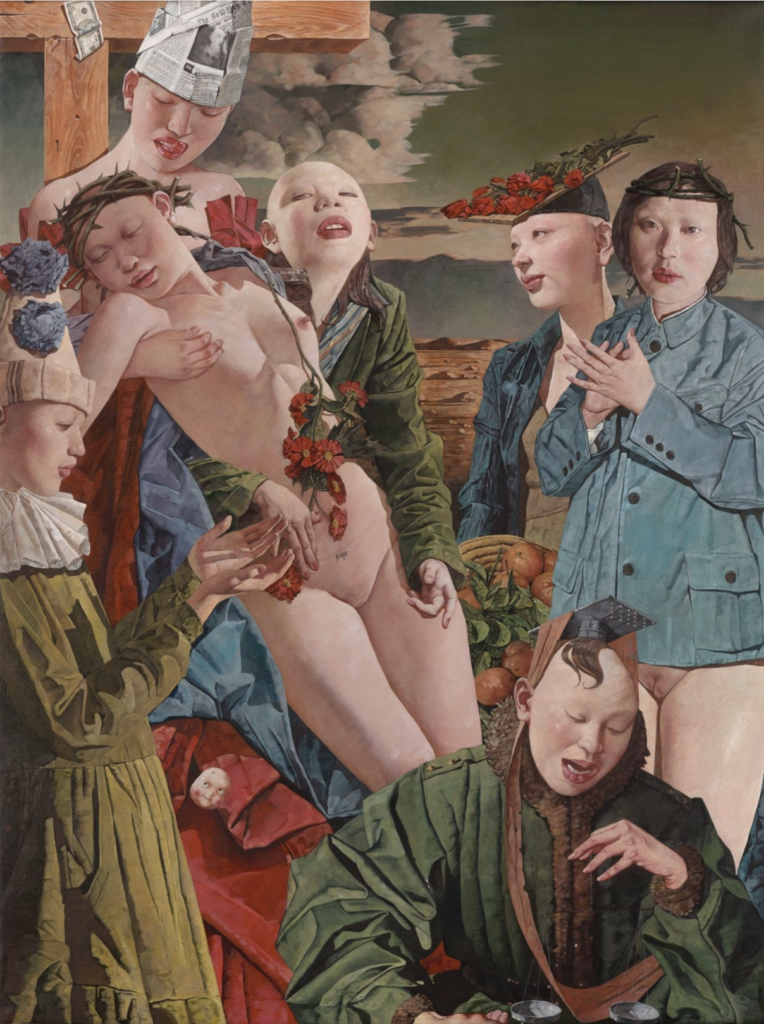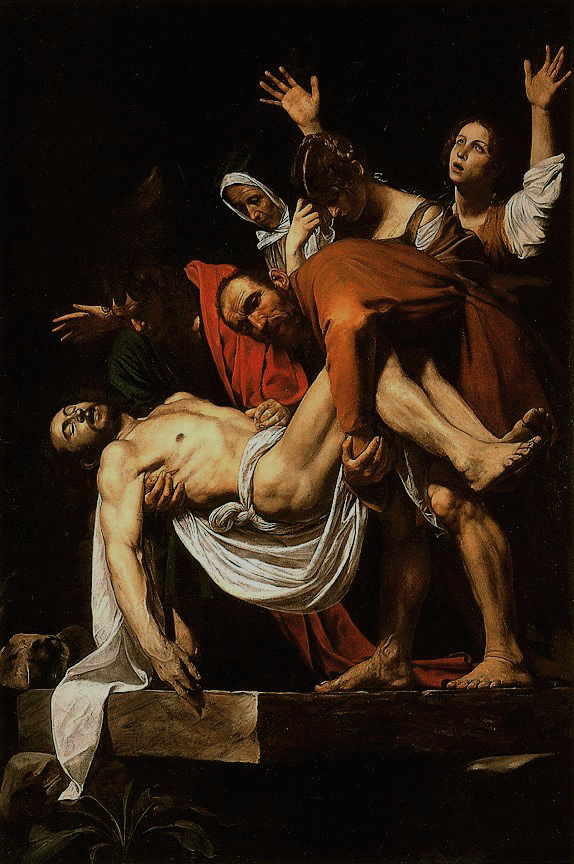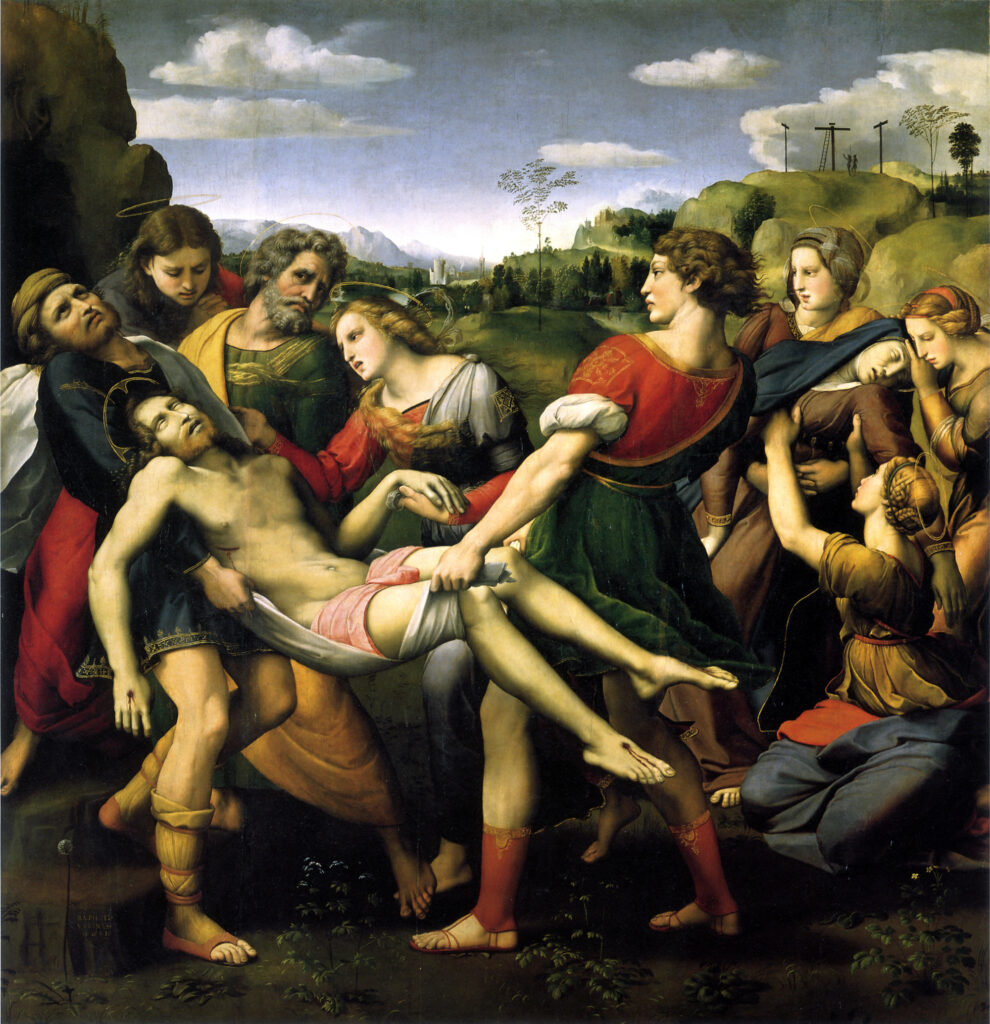
Judge, by the Chinese avant-garde artist Wei Dong (b. 1968), is modeled after the conventional deposition of Christ scene—I have included here depictions of this same scene by Raphael and Caravaggio for reference. Wei Dong’s adaptation of the scene features a hyper realistic nude Asian woman (so realistic, in fact, that upon first glance I thought Judge was a collage of found imagery; it is actually an oil painting) in the role of Christ. She wears a crown of thorns while surrounded by six women in various states of undress. These neoclassical figures are shown in a range of Chinese clothing styles, from military uniforms to traditional robes.


Wei Dong describes his works as “impulsive and emotional.” After relocating from China to the United States in 1999, he began combining Chinese symbols and motifs with Western materials and methodology to create paintings that illustrate the intersection of two distinct visual histories and the effects of globalization. Female figures dominate his paintings, posing provocatively and replacing traditionally male roles. A review by Ken Johnson in the New York Times from 1999 perfectly captures Wei’s approach to his practice: “A remarkable young painter who lives in Beijing, Wei Dong populates traditional landscapes with provocatively nontraditional figures — corpulent women, mostly, in states of lewd dishabille. Mr. Wei’s ribald paintings are more than just amusing exercises in absurdity and eroticism; they are allegories of tension between tradition and modernization, revealing windows into the conflict-ridden collective psyche of contemporary China.”
I have a strong interest in religious imagery in contemporary art, especially when juxtaposed by more shocking elements. Censorship has obviously been a persistent issue in the history of Chinese art, and Wei’s nude figures posed in these theatrical scenes serve as an explicit rejection of governmental control over art. His figures, which are almost always anatomically identified as women, are rendered in an androgynous style to the point of disfiguration, suggesting a kind of dark utopia. By reworking symbolic aesthetics derived from traditional Chinese culture, Wei Dong makes powerful statements on the human condition in relation to censorship.